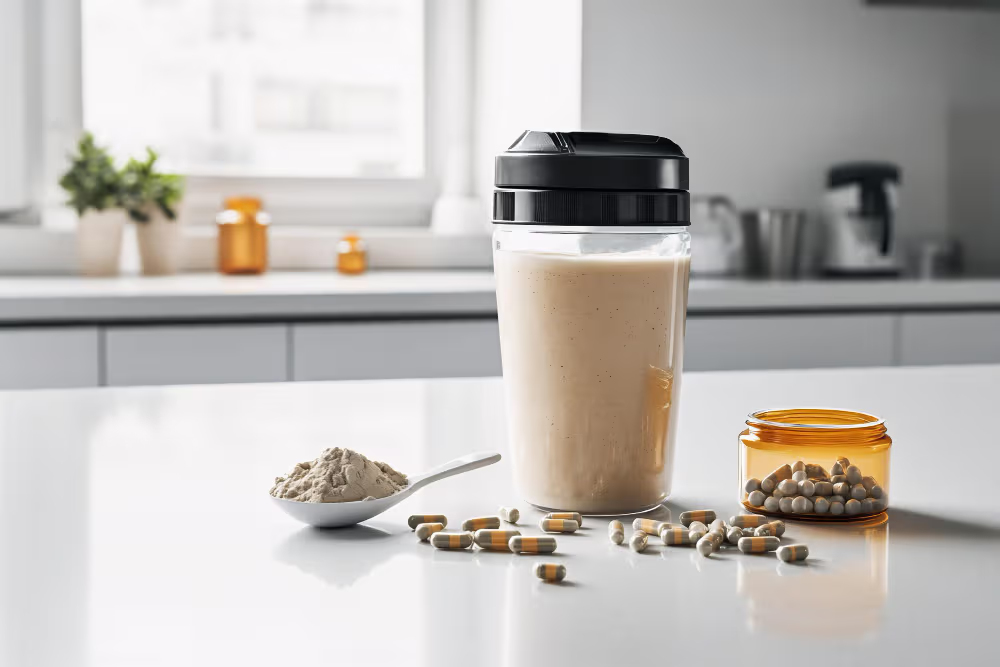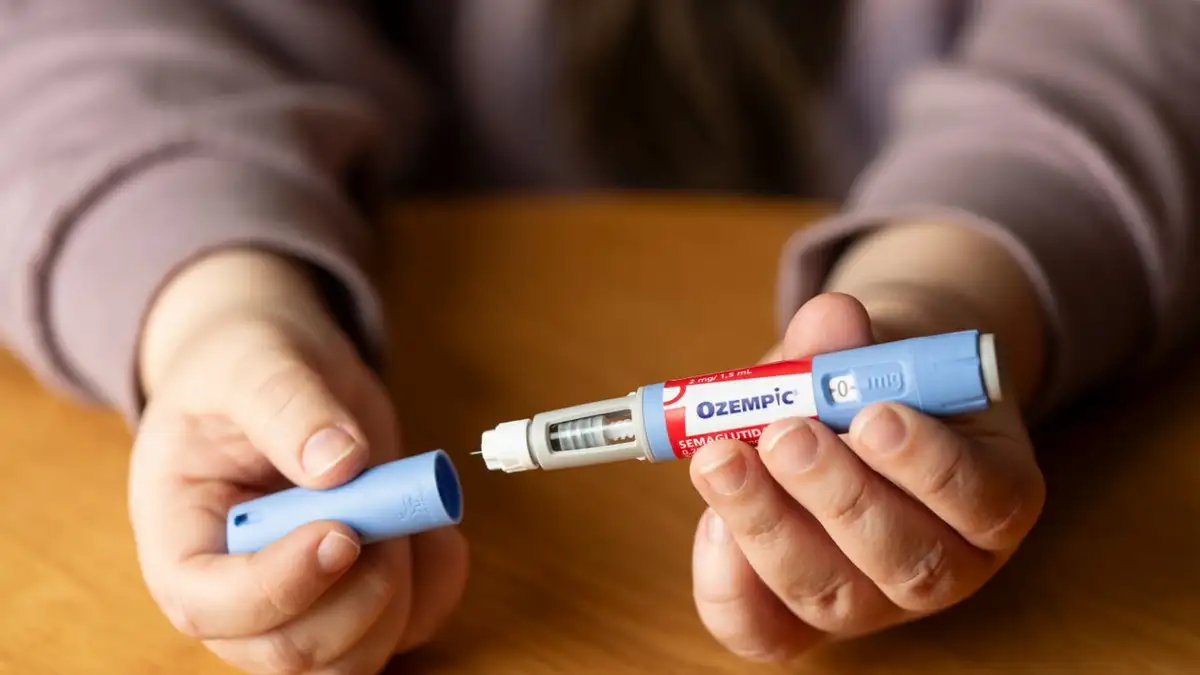
What Is Meal Replacement Therapy and Does It Actually Work?

What Is Meal Replacement Therapy?
Meal Replacement Therapy (MRT) involves replacing one or more of your daily meals with pre-formulated, calorie-controlled substitutes. These can come in the form of shakes, bars, or soups. The goal is to simplify meal planning while reducing caloric intake to support weight loss or manage medical conditions like obesity, type 2 diabetes, or high cholesterol.
Unlike traditional dieting, where you plan and cook every meal, MRT offers a structured approach by providing set portions with defined nutrients. This is particularly helpful for those who struggle with portion control, food prep, or emotional eating.
According to the National Institutes of Health, structured meal plans using medically approved meal replacements can be effective tools for weight loss and long-term metabolic improvements.
Does Meal Replacement Therapy Work for Everyone?
Meal Replacement Therapy has shown significant success across many populations, but it does not work identically for everyone. Factors influencing effectiveness include:
- Underlying medical conditions like thyroid disorders or PCOS
- Individual metabolism and age
- Commitment to the full program (including healthy snacks and exercise)
- Psychological relationship with food
In structured clinical trials, MRT has helped patients lose 5 to 10 percent of their body weight within 3 to 6 months. However, combining MRT with professional guidance and lifestyle change typically yields the best results.
How Does Meal Replacement Therapy Work?
MRT creates a calorie deficit while ensuring essential nutrition. Here’s how it supports weight management:
- Calorie Control: Each replacement is typically between 200 to 400 calories.
- Balanced Macros: Most formulas offer an optimized mix of protein, fiber, healthy fats, and vitamins.
- Reduced Hunger: High protein content and fiber promote satiety.
- Behavioral Shift: Simplifying choices reduces decision fatigue and emotional eating.
Patients who use MRT as part of a broader medical program often pair it with support services such as behavioral therapy or medications like Ozempic or Saxenda, which target hunger hormones.
How Long Until Meal Replacement Therapy Shows Results?
Many users notice early changes within the first two weeks. These include:
- Reduced bloating and sugar cravings
- Slight drops in weight due to water loss and initial fat burning
Within four to eight weeks, sustained weight loss becomes evident. Clinical studies often report:
- 3 to 5 kg of fat loss within 1 to 2 months
- Better glucose control for diabetic patients
- Lower LDL cholesterol and triglycerides over time
These outcomes are especially promising when MRT is paired with personalized plans like those at our professional weight loss clinic.
What Are the Pros and Cons of Meal Replacement Therapy?
Pros
- Time-Saving: No need to plan, shop, or cook multiple meals.
- Portion Controlled: Reduces risk of overeating.
- Convenient: Easy for busy schedules or travel.
- Scientifically Backed: Many studies confirm its role in structured weight loss.
- Versatile: Can be used with medications or other therapies like HCG injections.
Cons
- Monotony: Repeatedly consuming the same products can lead to taste fatigue.
- Lacks Whole Food Variety: Missing textures and phytonutrients of fresh food.
- Requires Supervision: Unsuitable for unsupervised or long-term extreme use.
- Does Not Address Emotional Eating Alone: Should be combined with behavioral support.
Is Meal Replacement Therapy Safe for Long-Term Use?
Short-term use (8 to 12 weeks) under medical guidance is generally considered safe. Longer-term use requires structured oversight. Safety improves when:
- Patients transition back to whole foods gradually
- Dietitians monitor vitamin and mineral intake
- MRT is used as a bridge rather than a permanent solution
In cases of severe obesity or chronic disease, some patients use MRT intermittently for long-term weight management, under supervision. It is often used alongside treatments like Duromine to manage appetite during transition phases.
Who Should Avoid Meal Replacement Therapy?
MRT is not appropriate for everyone. Caution or alternative strategies are recommended for:
- Pregnant or breastfeeding women
- Individuals with a history of eating disorders
- Children or teenagers without medical recommendation
- Patients with kidney disease or malabsorption disorders
Always consult a doctor or qualified nutritionist before beginning a restrictive dietary plan.
Frequently Asked Questions About Meal Replacement Therapy
1. Can I use MRT if I don’t have obesity?
Yes, but the goal should be health optimization rather than aggressive weight loss. MRT is sometimes used short-term to help reset eating habits or address issues like high cholesterol.
2. Is MRT better than regular dieting?
For those who struggle with consistency, MRT offers more structure and predictability. Studies show it often leads to faster initial weight loss compared to unstructured calorie restriction.
3. Can MRT be used with medications like Saxenda or Ozempic?
Yes. In fact, combining MRT with medications like Saxenda or Ozempic can enhance appetite control and improve adherence to calorie goals.
4. Will I regain the weight after stopping MRT?
Possibly, if you revert to old eating habits. Success depends on a gradual reintroduction of whole foods, paired with behavior change and activity. Maintenance support, like check-ins with a clinic, improves long-term success.
5. How do I choose a quality meal replacement product?
Look for options that:
- Have at least 15g of protein per serving
- Include fiber and essential vitamins
- Are low in added sugars and preservatives
Consult your provider or explore medically reviewed options available at Nexus Clinic.
6. Is MRT a crash diet?
No, when done correctly. Crash diets involve extreme restriction and nutrient imbalance. MRT ensures balanced intake and is often part of a medically supervised plan.
7. Can MRT be natural?
While the products are processed, many contain natural ingredients like whey protein, pea protein, or oat fiber. Natural MRT programs also incorporate fresh snacks like nuts, fruits, or low-fat yogurt.
8. Is MRT approved by doctors?
Yes, many clinicians endorse MRT for short- to mid-term use. The FDA and EFSA have approved various meal replacement products for weight management and diabetes control.
Final Thoughts: Is Meal Replacement Therapy Worth Trying?
Meal Replacement Therapy is not a magic bullet, but it is a scientifically supported tool for weight loss, especially when combined with behavioral support and medical supervision. It works best for those seeking structure, accountability, and simplicity.
If you’re curious about MRT or struggling with traditional diets, a professionally guided approach might be the breakthrough you need. Explore your options with Nexus Clinic’s experienced team to find out if this path fits your health goals.
You may also like
Adding {{itemName}} to cart
Added {{itemName}} to cart



